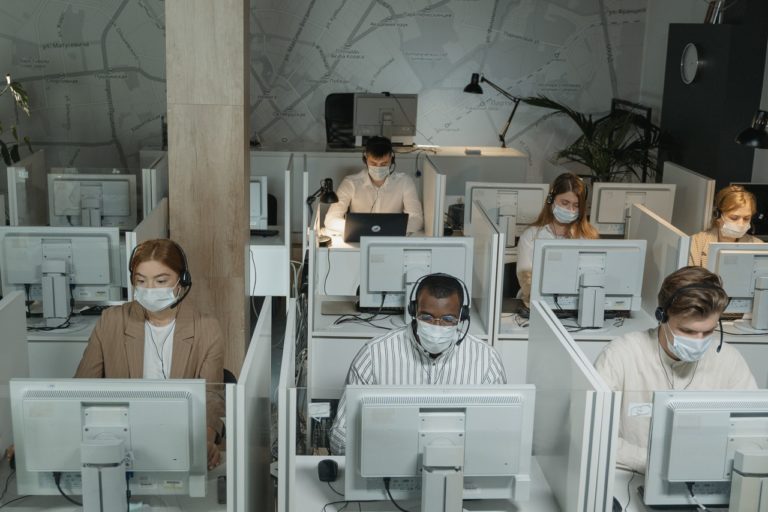The new normal can encourage people to feel indifferent about social distancing. It is true; vaccines do reduce COVID-19 symptoms. However, they do not prevent asymptomatic infection or virus spread. While it may seem harmless to visit the office, it can bring serious health consequences.
As the world recovers from the effects of the pandemic, businesses want their employees back in the office. With this, office spaces are being reevaluated to adhere to social distancing protocols. The reality is that there is no one-size-fits-all template for the new normal workplace. While we have different needs, there are common practices to consider. Here are initiatives to look into when building your new-normal workplace.
Manage the space where people will be working
Protecting employees by implementing a functional and spatial design is a good start. While the virus is a constant threat, it should not take away the productivity of your employees. These social distancing protocols are in place to make team members feel safer at work.
A well-managed workspace is vital to ensure the safety of the people. This applies to work areas and common rooms. Common rooms include entrances, the pantry, and comfort rooms.
Redesigning common should address the needs of the people. This should be done with social distancing in mind. You can put markers to show where people should sit to avoid close contact between employees for a start.
The movement in these areas should be limited. If possible, limit bathroom and pantry break to 5 minutes. Practice hourly disinfection for these areas, too. Urinals in men’s restrooms could also be upgraded with bathroom partitions. This will ensure the distance between people using the area.
In the main workspace, desk placements can be shifted to maintain a good distance. Instead of using cubicles that can take up too much space, try common workstations. They have less clutter and allow more space than cubicles. Place tables and chairs near walls and windows to allow good air circulation.
Downsizing is not a bad thing for your office space. If you need to let go of items, ask where you can donate. And if you do not have the budget for new office furniture, look into renting or leasing.
Manage the number of people working in the office
It is possible to reduce virus transmission in your workplace. You can do so by managing the number of people on-site at the same time. This is especially important if your office has limited space.
For example, a team working on an important project can work on-site for a whole week. The rest of the employees can work remotely. You can assign different teams for different weeks or days. What’s important is that people in the office can still work at a safe distance.
Managers can confirm who will be working on-site ahead of the workday. Those who are not signed up for work should work remotely. This technique will limit unnecessary interactions in the workplace.
Run a health assessment test when an employee expresses the desire to work in the office. This is a great way to manage the volume of the people at the office. This is also an added layer of accountability for your team. Your team members must be honest about their health. While being present has been a workplace issue pre-pandemic, times have drastically changed. Going to work with a headache or a low-grade fever is not something to be proud of.
When staff members feel that they are not in their best shape to work in the office, they must work from home. This initiative will keep the workforce healthy and at peace.

Maintain standard health protocols
Companies should prioritize Contact-tracing efforts for easy monitoring. As much as possible, windows should be open for air to circulate properly. Unnecessary crowding in meeting areas should also be avoided.
Masks should be worn at all times and can only be removed when employees are eating or drinking. Hand sanitation stations should also be placed in common areas for accessibility. Common areas should have wipes accessible to staff members so that they can disinfect their stations after use.
Team members above 60 years old are only allowed to work from home. This also goes to team members with preexisting health conditions. While they may be an integral part of the workforce, their well-being is irreplaceable.
Building a socially-distant workplace can be challenging. It takes a lot of effort for the company and the employee to adhere to these standards. However, the essence of these efforts is the safety of the workforce. After all, a healthy team can deliver great work together.




